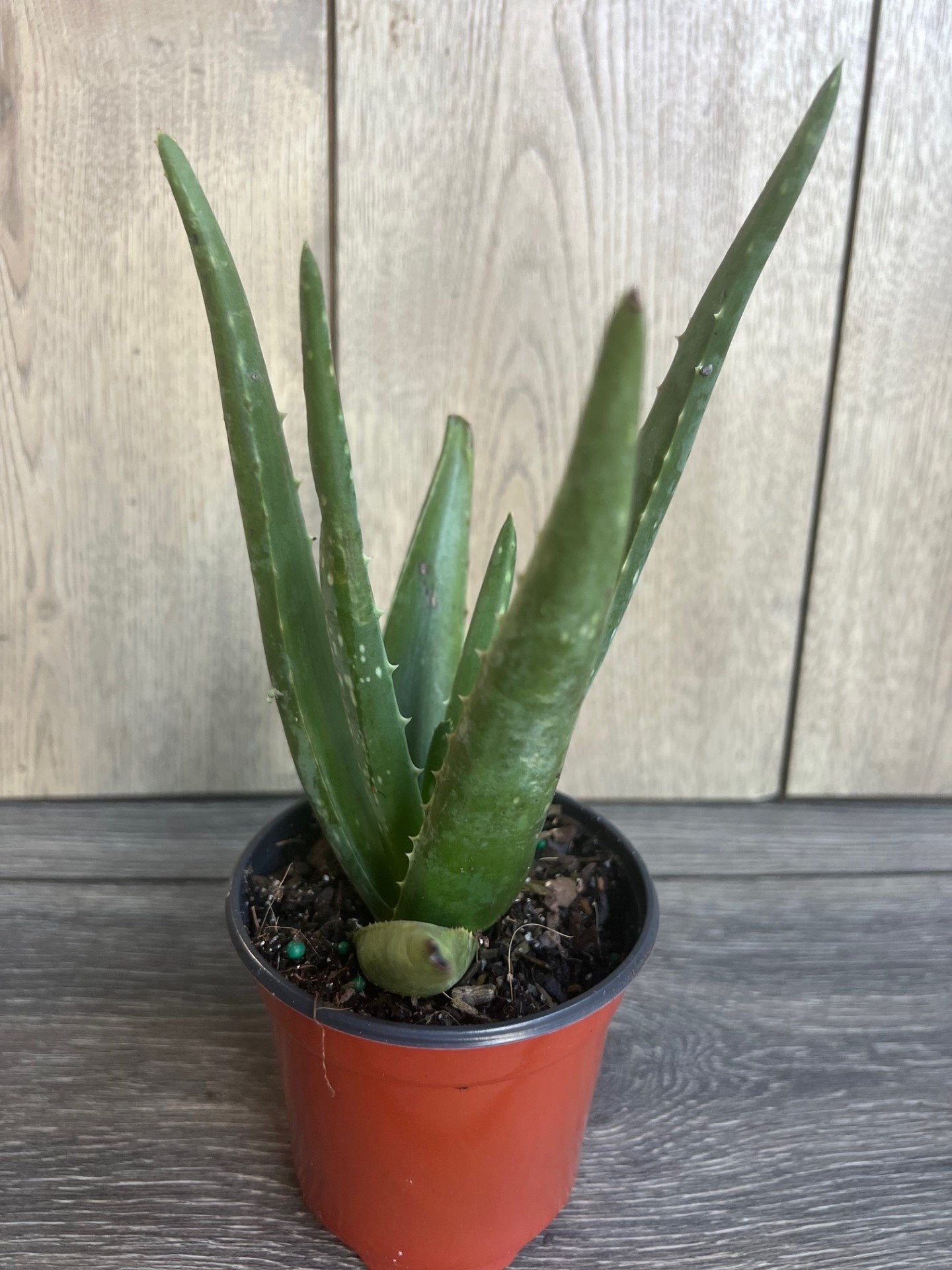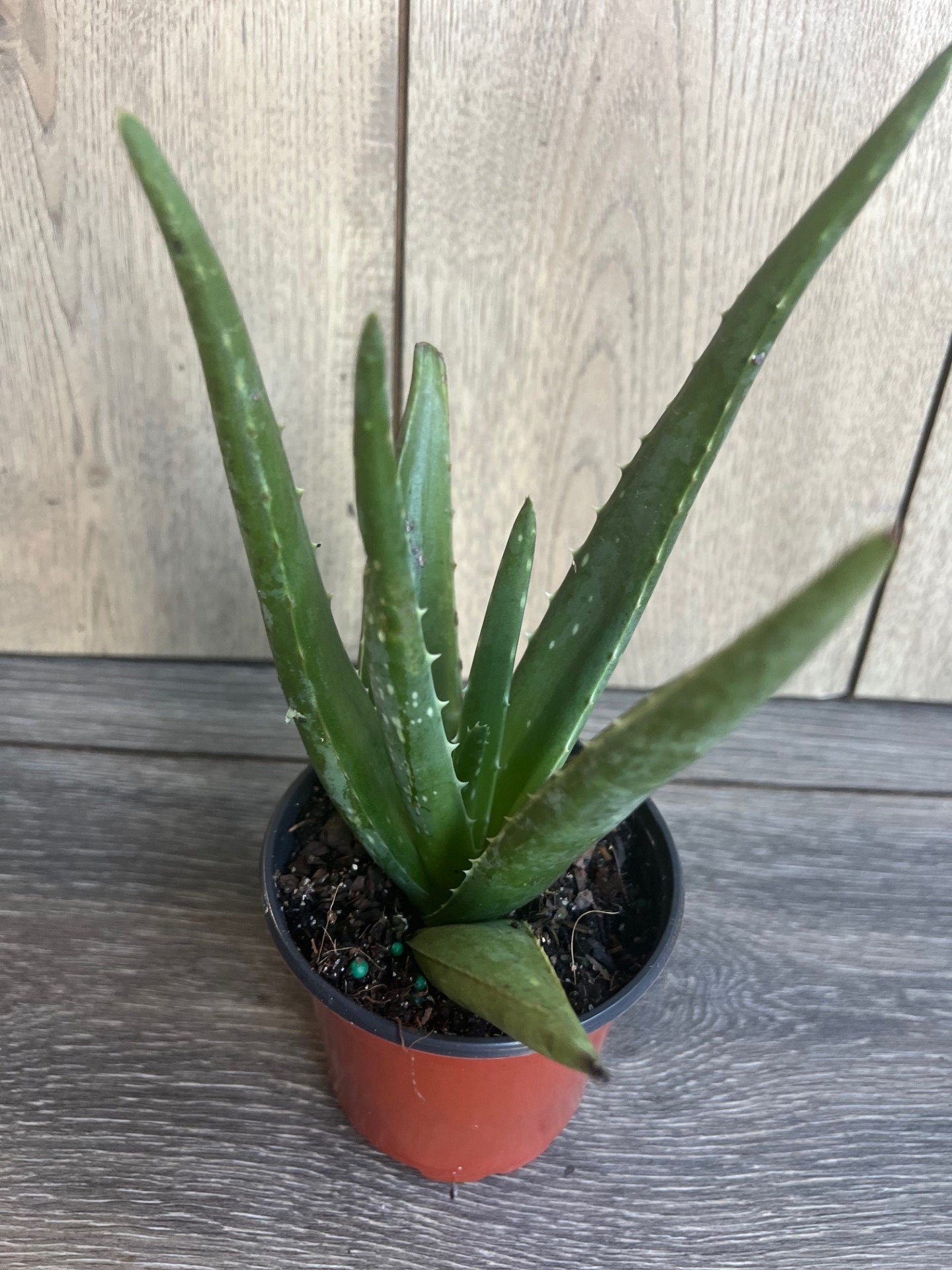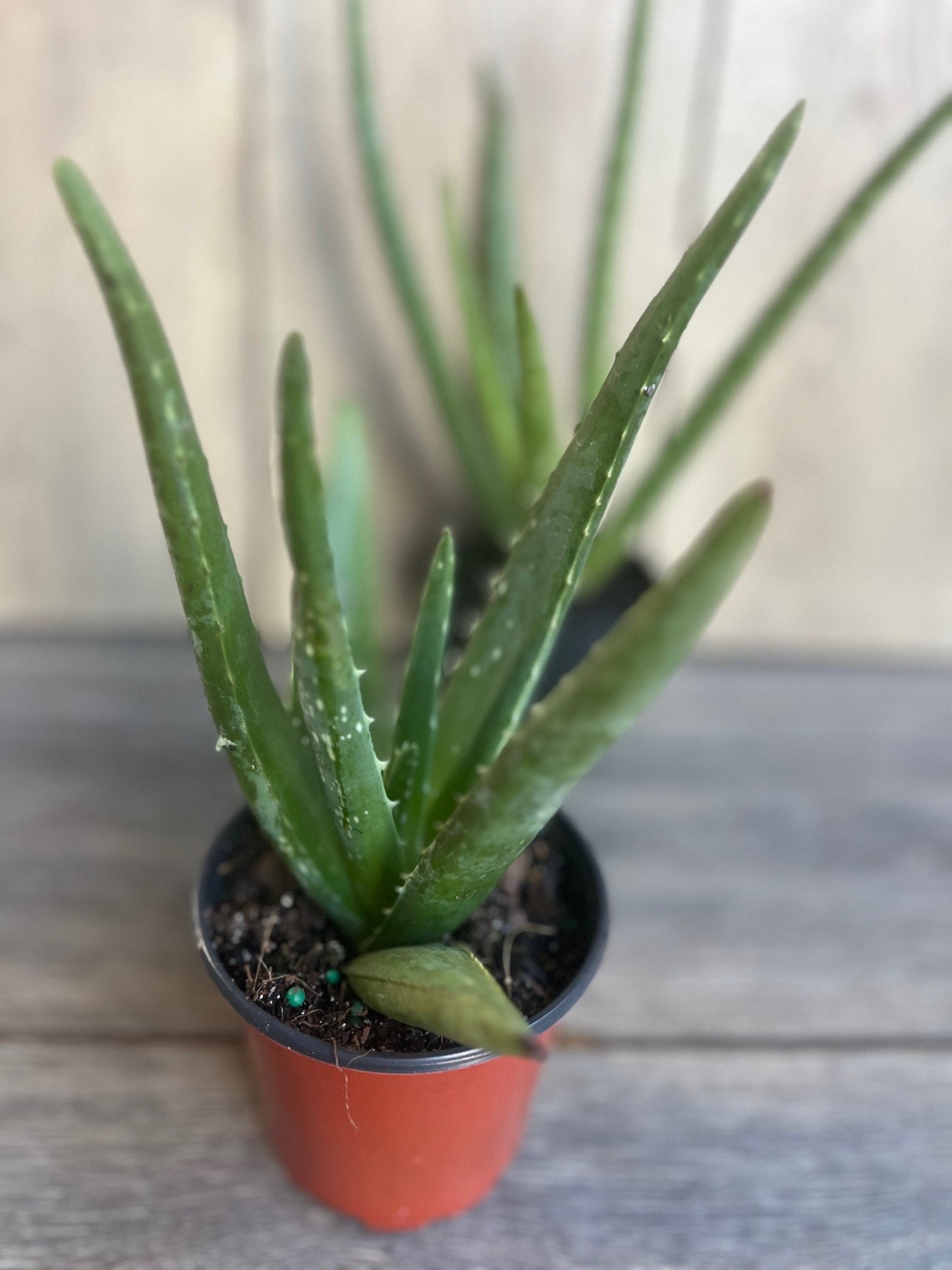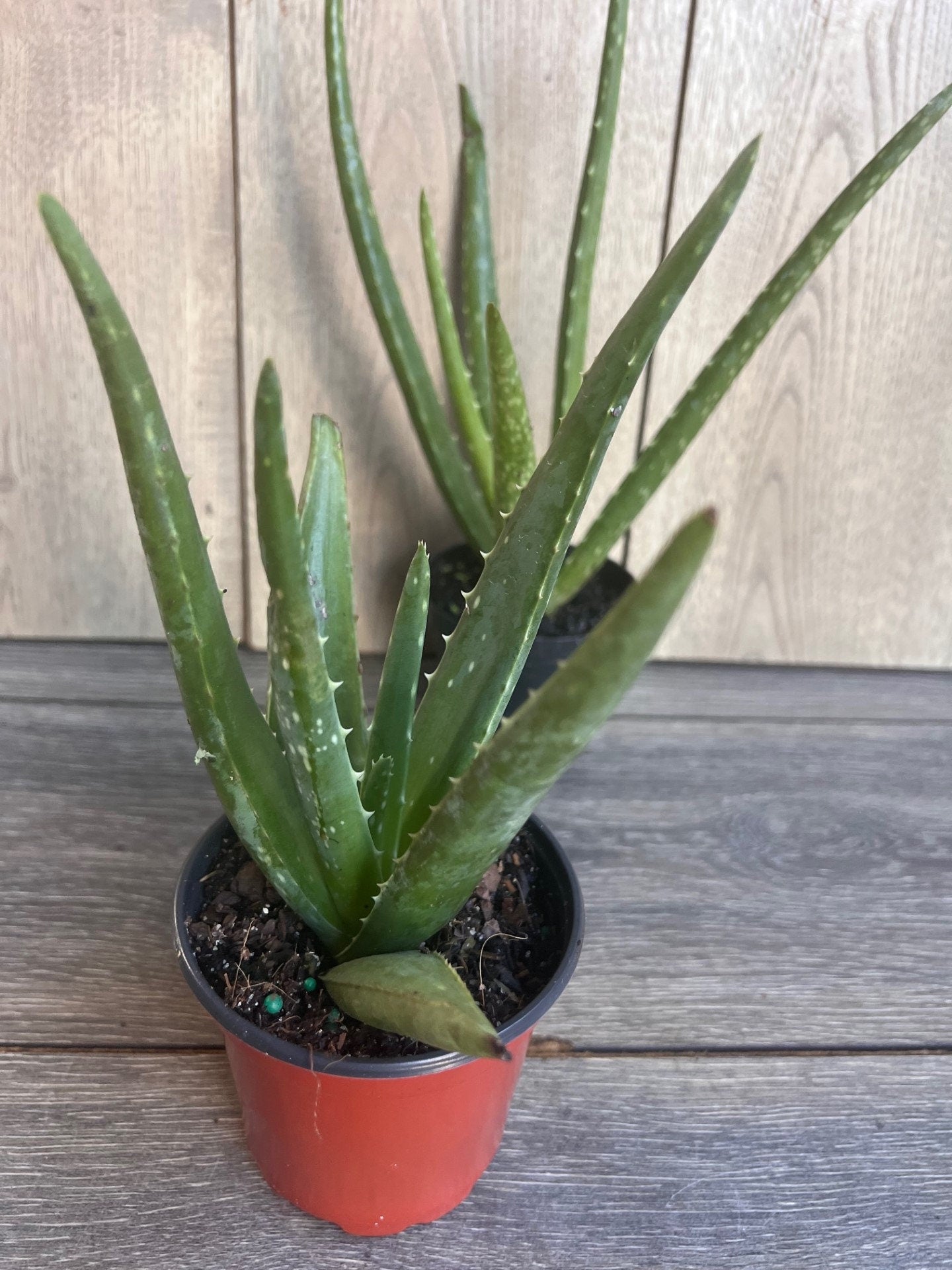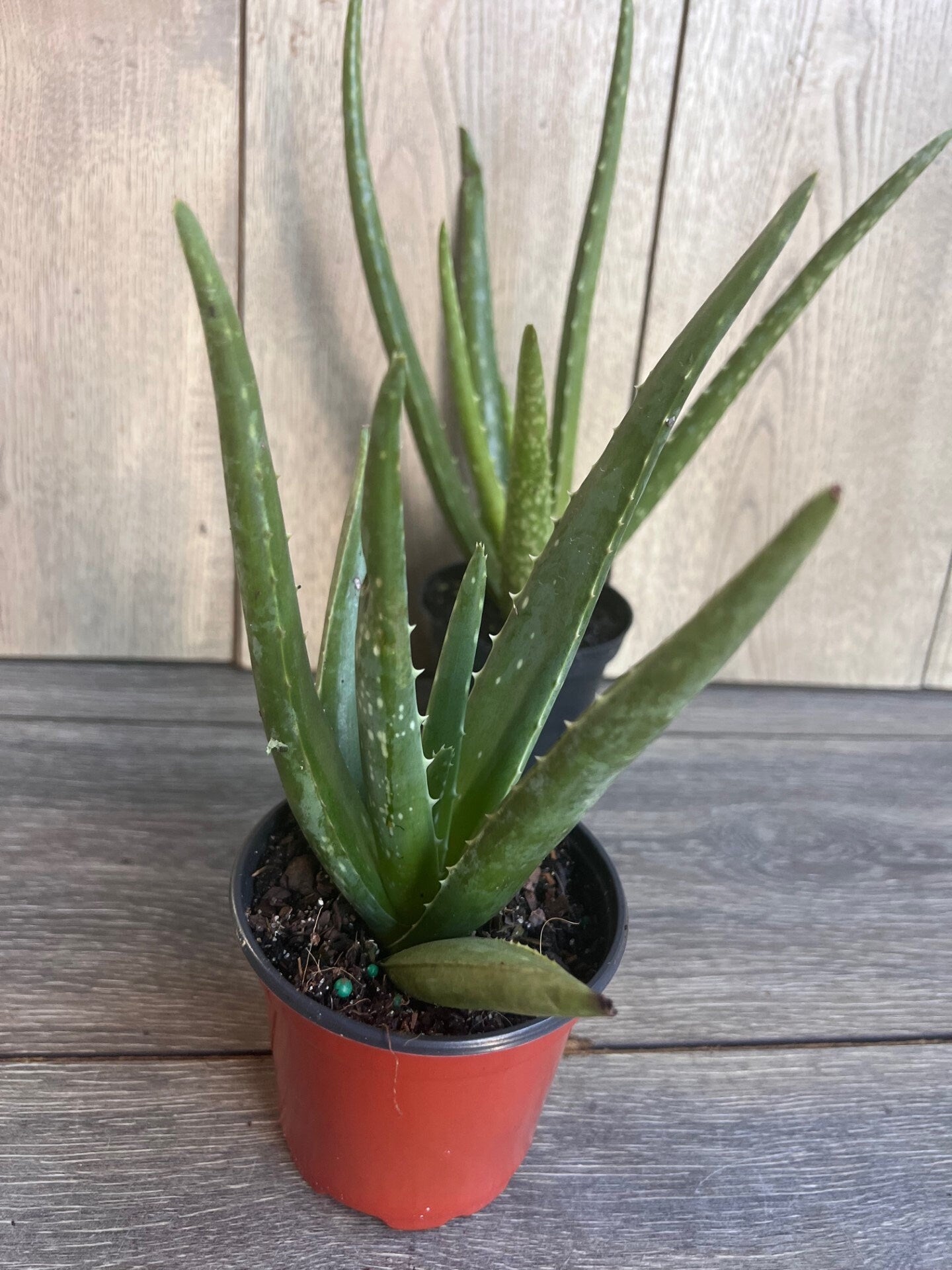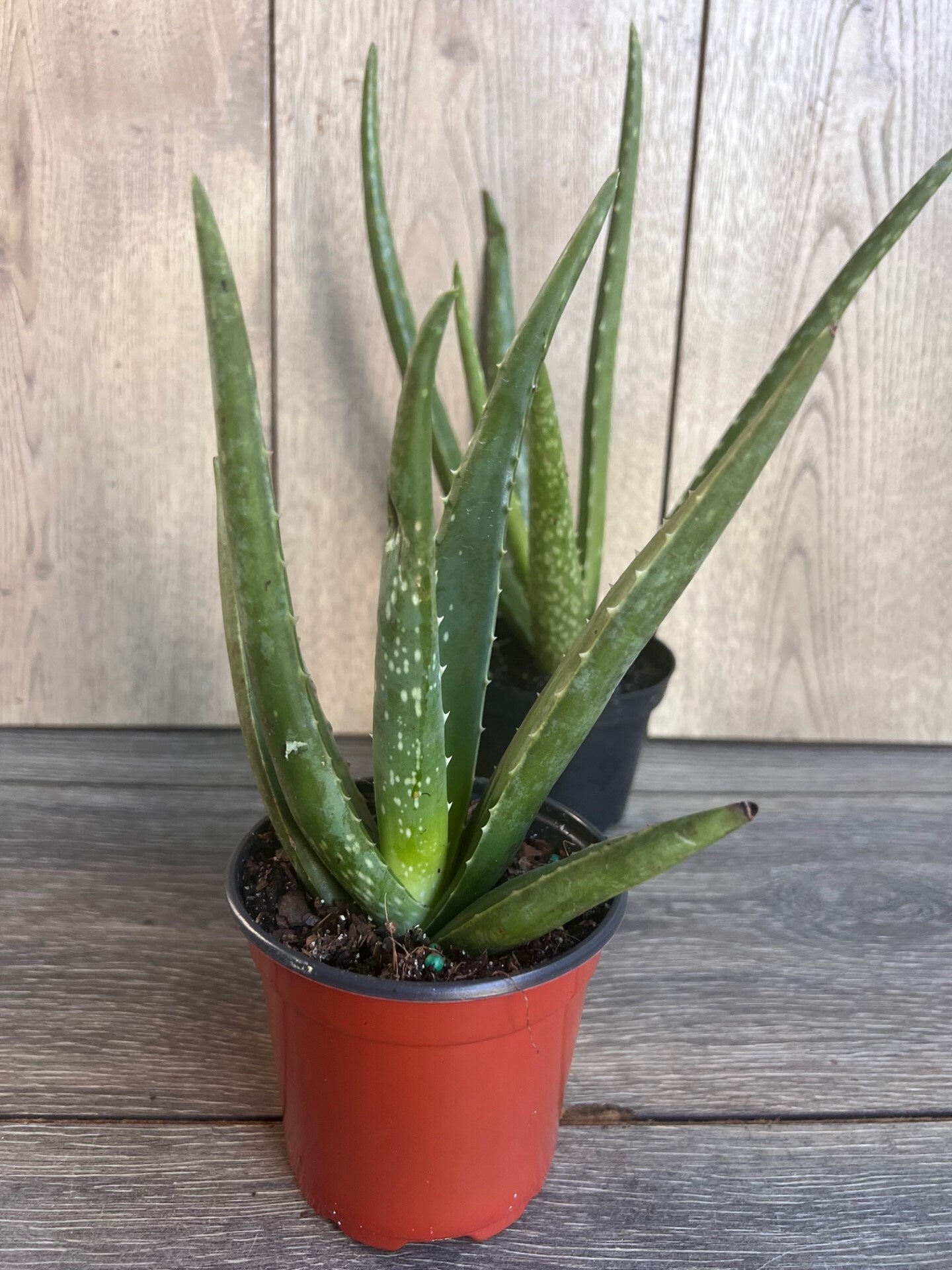Aloe Vera Plant in 4" pot, house plant
Aloe Vera Plant in 4" pot, house plant
Couldn't load pickup availability
Note: You will Receive aloe Vera plant in 4" pot similar to the pictures
Aloe is a genus of succulent plants known for its thick, fleshy leaves that are typically arranged in rosettes, and often have a spiky or serrated edge. The most well-known species, Aloe vera, is prized for its medicinal properties, particularly its soothing gel, which is commonly used to treat burns, cuts, and skin irritations. Aloe plants are drought-tolerant and thrive in well-draining soil with plenty of sunlight, making them ideal for indoor and outdoor environments in dry climates. Their striking, architectural appearance adds a touch of desert elegance to any space, while their low-maintenance nature makes them an excellent choice for beginners. Aloe plants are also known for their air-purifying qualities, further enhancing their appeal as both decorative and functional houseplants.
Light Requirements
- Ideal Light: Aloe vera thrives in bright, direct sunlight. Place it near a south- or west-facing window where it can receive at least 6 hours of direct sunlight each day.
- Low Light Tolerance: Aloe vera can tolerate low light, but its growth may slow down, and it may become leggy or weak. It’s best to give it plenty of sunlight for optimal health.
- Light Sensitivity: If you notice the leaves turning yellow or brown, it might be a sign that it's receiving too much direct sun, especially if the plant is not acclimated to bright light. Gradually introduce it to stronger light if moving it to a sunnier spot.
Watering
- Watering Schedule: Aloe vera is a drought-tolerant plant and does best with infrequent watering. Allow the soil to dry out completely between waterings. Typically, you should water every 2-3 weeks, depending on the climate and the season.
- Watering Method: When watering, give the plant a deep drink, ensuring the water reaches the roots. Be sure to empty any excess water from the saucer to prevent the roots from sitting in water, which can lead to root rot.
- Signs of Overwatering: If the leaves begin to turn yellow, mushy, or translucent, it may be a sign of overwatering or waterlogged soil.
- Underwatering Signs: Aloe can tolerate a bit of neglect, but if the leaves start to wrinkle or become soft, it may be a sign that the plant needs a drink.
Temperature
- Ideal Temperature: Aloe vera thrives in warm temperatures between 59°F and 77°F (15°C - 25°C). It can tolerate higher temperatures but should be kept in areas with stable warmth.
- Cold Sensitivity: Aloe vera is sensitive to frost and should be kept indoors in colder climates. If exposed to temperatures below 50°F (10°C), the plant can suffer damage or die.
- Avoid Drafts: Keep the plant away from cold drafts, air conditioning vents, or places with fluctuating temperatures.
Soil
- Well-Draining Soil: Aloe vera needs a well-draining potting mix, as it’s susceptible to root rot in soggy soil. Use a cactus or succulent mix, or create your own by adding perlite or sand to a standard potting mix.
- Container: When planting or repotting, choose a container with drainage holes to ensure excess water can escape.
Fertilizing
- Growing Season (Spring and Summer): Aloe vera doesn’t need heavy fertilization. During the growing season, you can fertilize once a month using a diluted, balanced liquid fertilizer (a general 10-10-10 formula works well). Be sure to dilute it to half strength.
- Winter Care: Aloe vera is not actively growing in the winter, so avoid fertilizing during this period. Fertilizing when the plant is dormant can cause stress and damage.
Pruning and Maintenance
- Cleaning: Aloe vera plants are relatively low-maintenance, but you can gently wipe the leaves with a damp cloth to remove dust. This helps the plant absorb light more effectively.
- Removing Offsets: Aloe vera plants often produce "pups" or offsets, small baby plants that grow at the base. You can leave them in place, or carefully remove them with a clean knife and pot them separately to grow more aloe plants.
- Trimming: If the leaves become damaged, you can prune them at the base. If you use the leaves for medicinal or cosmetic purposes, cut the leaves from the outer section to avoid damaging the main growth point.
Pests and Problems
- Common Pests: Aloe vera is relatively pest-resistant, but it can occasionally attract mealybugs, aphids, or scale. If you notice sticky residue or small white patches, treat the plant with insecticidal soap or a mixture of water and neem oil.
- Root Rot: Overwatering is the most common cause of aloe vera plant problems. If the leaves start to yellow, become mushy, or fall off easily, check the roots for signs of rot. If the roots are rotting, you may need to trim away the damaged parts and repot the plant in fresh, well-draining soil.
Share
